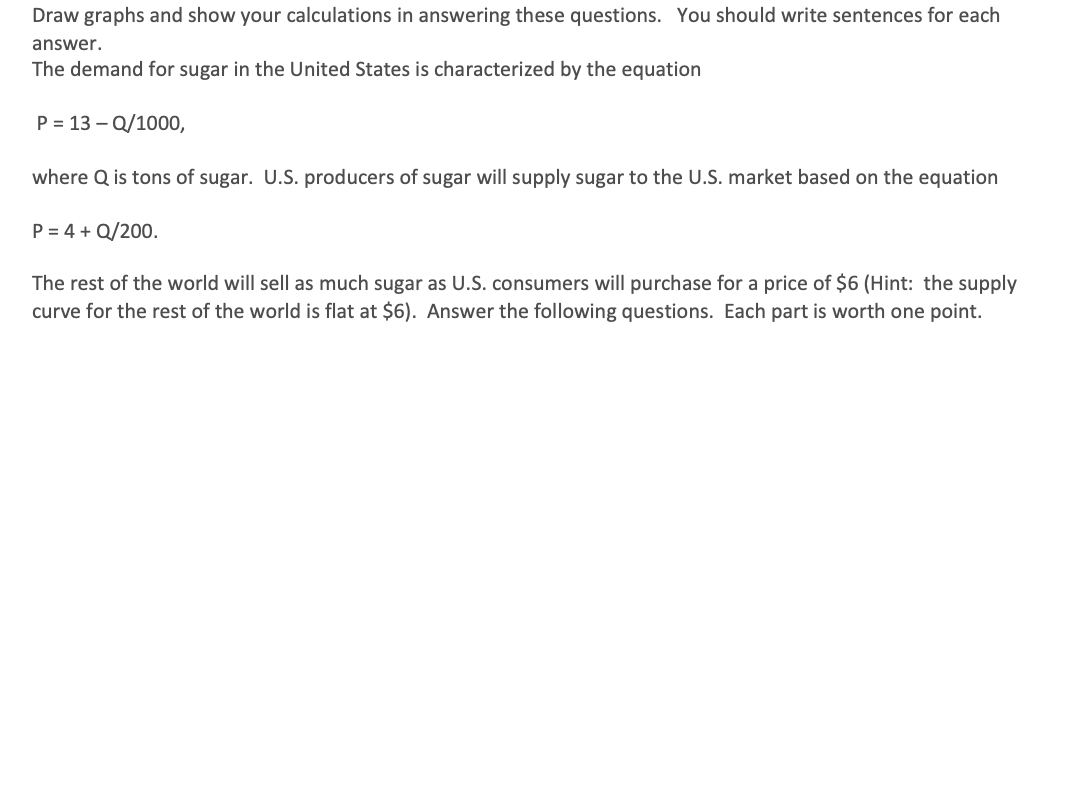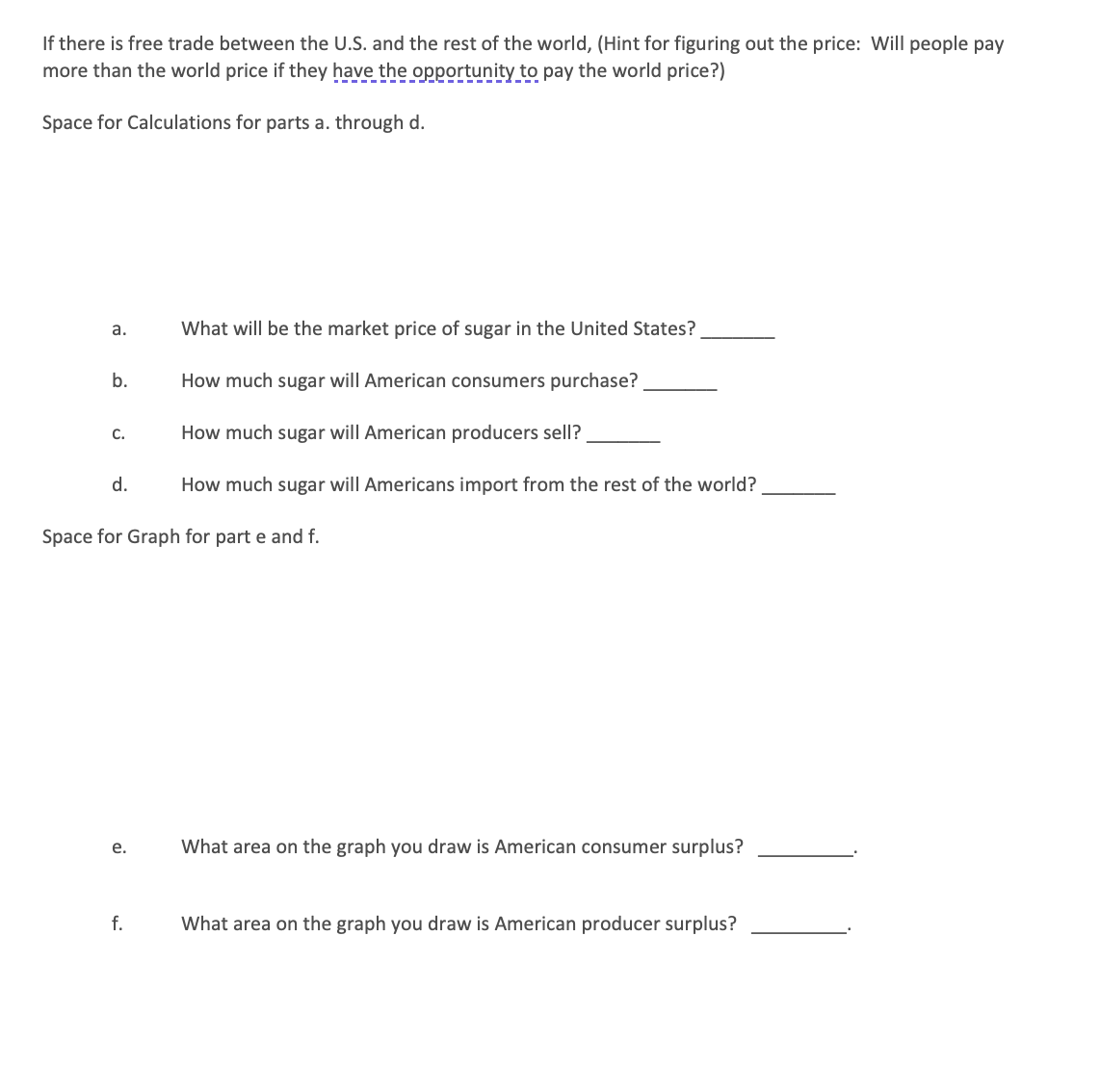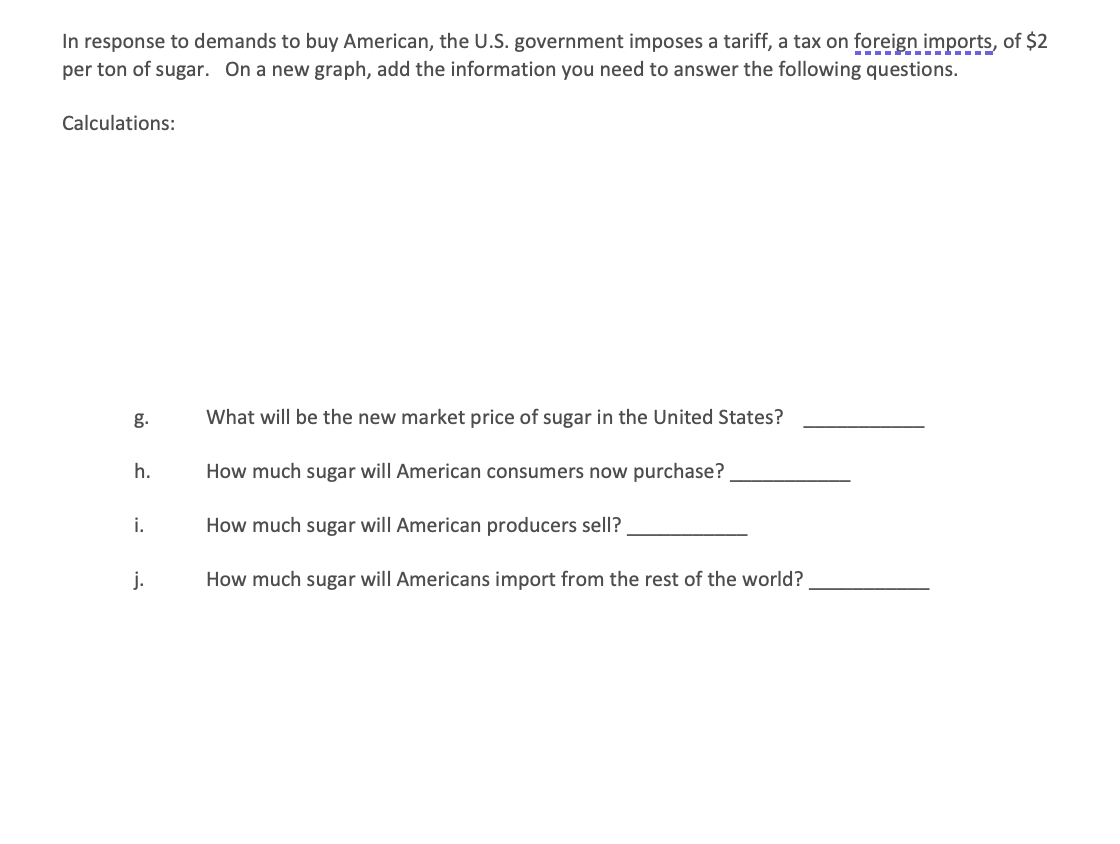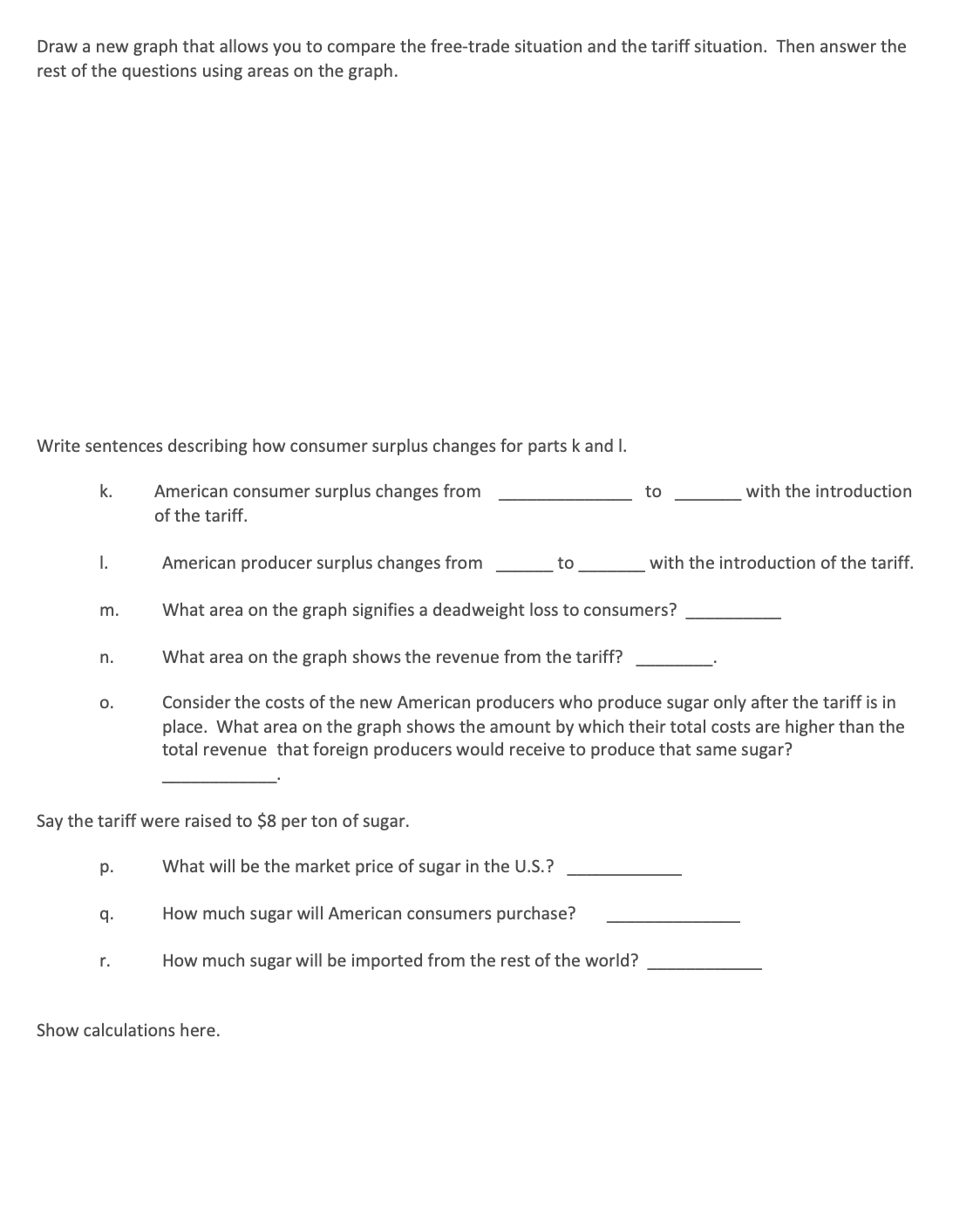Answered step by step
Verified Expert Solution
Question
1 Approved Answer
Draw graphs and show your calculations in answering these questions. You should write sentences for each answer. The demand for sugar in the United




Draw graphs and show your calculations in answering these questions. You should write sentences for each answer. The demand for sugar in the United States is characterized by the equation P = 13 - Q/1000, where Q is tons of sugar. U.S. producers of sugar will supply sugar to the U.S. market based on the equation P = 4 + Q/200. The rest of the world will sell as much sugar as U.S. consumers will purchase for a price of $6 (Hint: the supply curve for the rest of the world is flat at $6). Answer the following questions. Each part is worth one point. If there is free trade between the U.S. and the rest of the world, (Hint for figuring out the price: Will people pay more than the world price if they have the opportunity to pay the world price?) Space for Calculations for parts a. through d. a. b. C. d. e. What will be the market price of sugar in the United States? Space for Graph for part e and f. f. How much sugar will American consumers purchase? How much sugar will American producers sell? How much sugar will Americans import from the rest of the world? What area on the graph you draw is American consumer surplus? What area on the graph you draw is American producer surplus? In response to demands to buy American, the U.S. government imposes a tariff, a tax on foreign imports, of $2 per ton of sugar. On a new graph, add the information you need to answer the following questions. Calculations: g. h. i. j. What will be the new market price of sugar in the United States? How much sugar will American consumers now purchase? How much sugar will American producers sell? How much sugar will Americans import from the rest of the world? Draw a new graph that allows you to compare the free-trade situation and the tariff situation. Then answer the rest of the questions using areas on the graph. Write sentences describing how consumer surplus changes for parts k and I. American consumer surplus changes from of the tariff. k. I. m. n. O. Say the tariff were raised to $8 per ton of sugar. p. q. r. American producer surplus changes from What area on the graph signifies a deadweight loss to consumers? What area on the graph shows the revenue from the tariff? Consider the costs of the new American producers who produce sugar only after the tariff is in place. What area on the graph shows the amount by which their total costs are higher than the total revenue that foreign producers would receive to produce that same sugar? to What will be the market price of sugar in the U.S.? How much sugar will American consumers purchase? How much sugar will be imported from the rest of the world? Show calculations here. to with the introduction with the introduction of the tariff.
Step by Step Solution
★★★★★
3.31 Rating (151 Votes )
There are 3 Steps involved in it
Step: 1
As per the condition we must find the equilibrium quantity and price in US market and at equili...
Get Instant Access to Expert-Tailored Solutions
See step-by-step solutions with expert insights and AI powered tools for academic success
Step: 2

Step: 3

Ace Your Homework with AI
Get the answers you need in no time with our AI-driven, step-by-step assistance
Get Started


